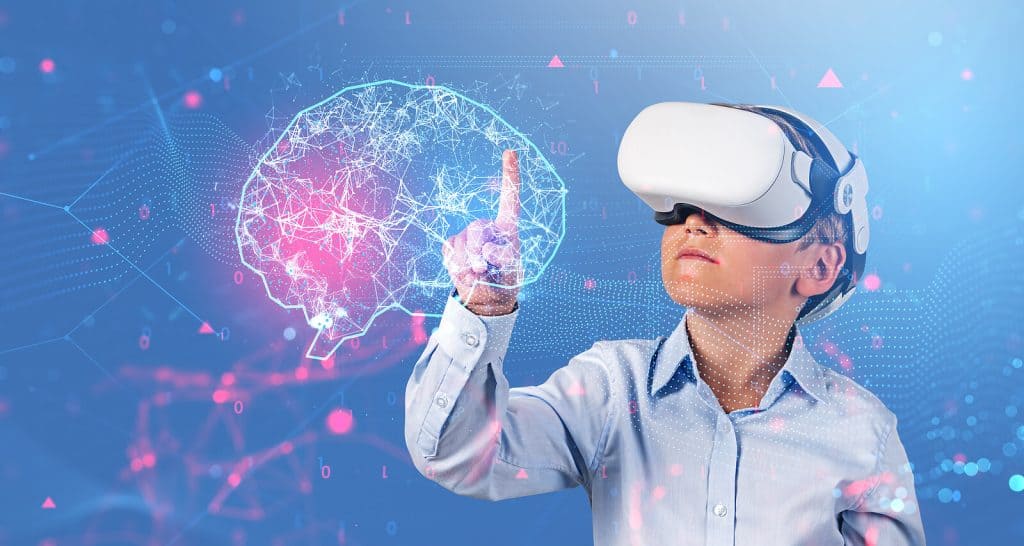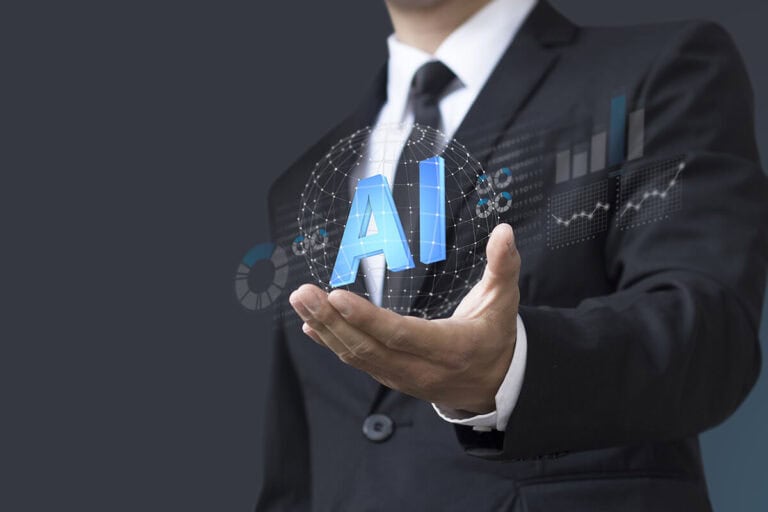Artificial intelligence can help generate compelling content for virtual reality education and support immersive and personalized learning experiences. There are several ways it can tailor the simulated environment to a student’s learning style or provide a digital assistant capable of interacting in a natural and lifelike way.
Table of Contents
Toggle1. Realistic Environments
One of the biggest ways AI can help generate compelling content for VR in education is through realistic environment production. VR displays typically only show flat images that appear three-dimensional. However, a form of AI called a neural network can mimic how people process visual information by using visual depth and focus to produce realistic depictions of environments.
Typical visual content in a VR landscape may appear shallow or unrealistic, but AI can adapt textures and proportions to better simulate how the human brain perceives objects. It produces a more realistic digital learning environment.
2. Immediate Applications
Another primary way AI can generate compelling content for VR education is through machine learning. ML can specifically assist with science, technology, engineering and math (STEM) fields because they emphasize innovation and critical thinking, and ML supports that particular learning style. For example, it can help people who study science by recognizing and detecting anomalies during a VR-simulated dissection.
While simulation is a great teaching tool, AI can perform actions or provide personalized insight to enhance it. Since it can transform the lesson from a simple virtual environment into a series of data-driven interactions, students can immediately apply their teachings. The hands-on exploration style of AI content in VR can even lead to a better understanding.
3. Customized Experiences
Machine learning allows for personalized education because it can assess students’ responses based on various circumstances and create custom lesson plans based on the results. While teachers don’t typically have time to tailor their lesson plans, they can use it to rapidly generate content that aligns with their teachings and each student’s preferences.
Educators can feed data gathered from the class to the algorithm, which lets it form unique VR experiences for everyone. Whether it’s through customized objects, dialogue or lesson plans, AI can adapt to anyone’s learning style.
4. Adaptive Responses
Since AI can gather and process large amounts of information quickly, its integration with VR can act as the means and method for teaching. Once it collects enough data from students, the model can analyze their behavior and reasoning and adapt to it.
AI can tailor its feedback based on how students interact with it. A regular VR experience usually relies on scripted dialogue or interactions, but one integrated with an intelligent algorithm can have adaptive responses. Since it can tailor the virtual experience to each student, the lesson is more likely to be compelling and engaging.
5. Narrative Generation
AI can train on databases of images, text or videos to produce creations, so teachers can input a request for it to make narratives for a VR experience. Unlike other content creation methods, it uses a data-driven approach to generate new material. Since it can recognize patterns and trends in an educational topic, it can build a compelling narrative relevant to a specific concept or skill in a lesson.
They can generate all of the dialogue or map the entire progression of the experience with AI, whether through algorithmically-generated scripts or content. Additionally, students can have different versions of the same narrative tailored just for them.
6. Enhanced Immersion
AI is capable of adapting simulations in real time, which can enhance immersion. It helps create compelling content by altering the simulation based on user interaction. Traditional environments aren’t capable of responding intelligently to students’ behavior, but machine learning integration can come to logical conclusions about them to emulate their learning style.
7. Digital Conversations
Natural language processing (NLP) is a form of AI capable of human-like conversation. Through a combination of computational linguistics and machine learning, it can understand the meaning behind text and speech. One basic example is a website’s chatbot.
In application to VR, teachers can use NLP to create intelligent digital avatars for students to interact with. Since it relies on augmented human intelligence, it speaks and responds just like a normal person would. The conversation patterns can be based on data relevant to the students, so the dialogue can feel relevant and flow naturally.
What Are the Benefits of AI Content for VR Education?
AI-integrated VR education has plenty of benefits because it offers a personalized and informed learning experience. Researchers report VR education leads to increased understanding, heightened memory retention, improved performance and better collaboration, among other benefits. Since students’ experiences are tailored to them and made more engaging by the simulation, they’re more likely to remember and respond positively to the lesson.
There are several significant benefits of the combination of AI and VR in education:
- Eliminates distance barriers: Students can gather and interact with each other in VR no matter how far apart they are in reality.
- Increases engagement: Students often feel the experience is more fun than traditional methods because they’re familiar with the digital landscape and find the interaction to be motivational.
- Offers more learning opportunities: While a group of students might not be able to travel to the other side of the world during history class, they can experience a realistic version through VR.
- Provides better accessibility: Students with disabilities or those who are immunocompromised can attend lectures and lessons digitally with ease. The increased accessibility of a virtual setting can reduce barriers to education.
AI-generated content in a VR setting is a more accessible medium for education than traditional methods and can also be much more effective. In addition, it encourages student engagement and creates compelling interactions.
What Are the Challenges of AI Content for VR Education?
While AI-generated content in VR education has many benefits, there are a few drawbacks. Concerns about the financial and ethical implications are important factors for those interested in the concept.
There are some challenges facing AI incorporation into VR education:
- Expensive: The initial cost of outfitting an entire class with VR headsets can be high. In addition, future maintenance and upkeep can be expensive.
- Potentially unethical: The ethical implications of using AI in the classroom are debated by many people. Additionally, some professionals may feel uncomfortable generating teaching content using algorithms.
- Complex: While most VR headsets are relatively user-friendly, it may not be easy for classes to learn how to operate them. While modern classrooms are full of tech-oriented students, there’s still a learning curve.
These challenges may not apply to every classroom but are still worth considering. While their use may offer more positives than negatives, there are still accessibility and usability barriers that may limit who can utilize them.
AI Can Help Generate Compelling Content for VR Education
Although some classrooms may face challenges incorporating AI into their education style, it has many benefits. Many applications for it in VR education exist, but the ability for it to create content is of significant importance. It can train on relevant data to develop natural dialogue, unique narratives and immersive environments.




